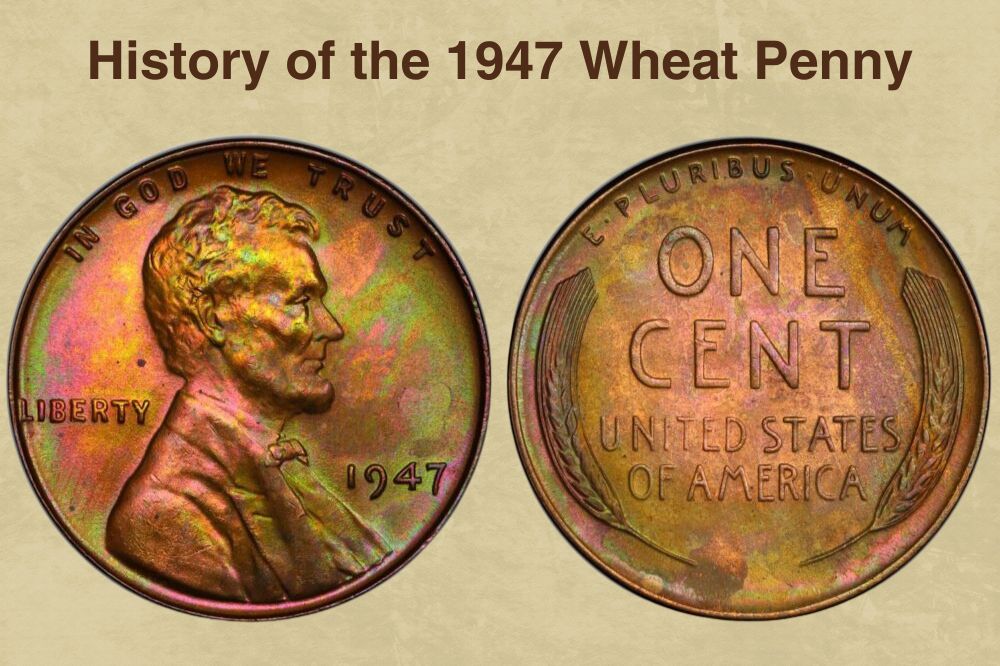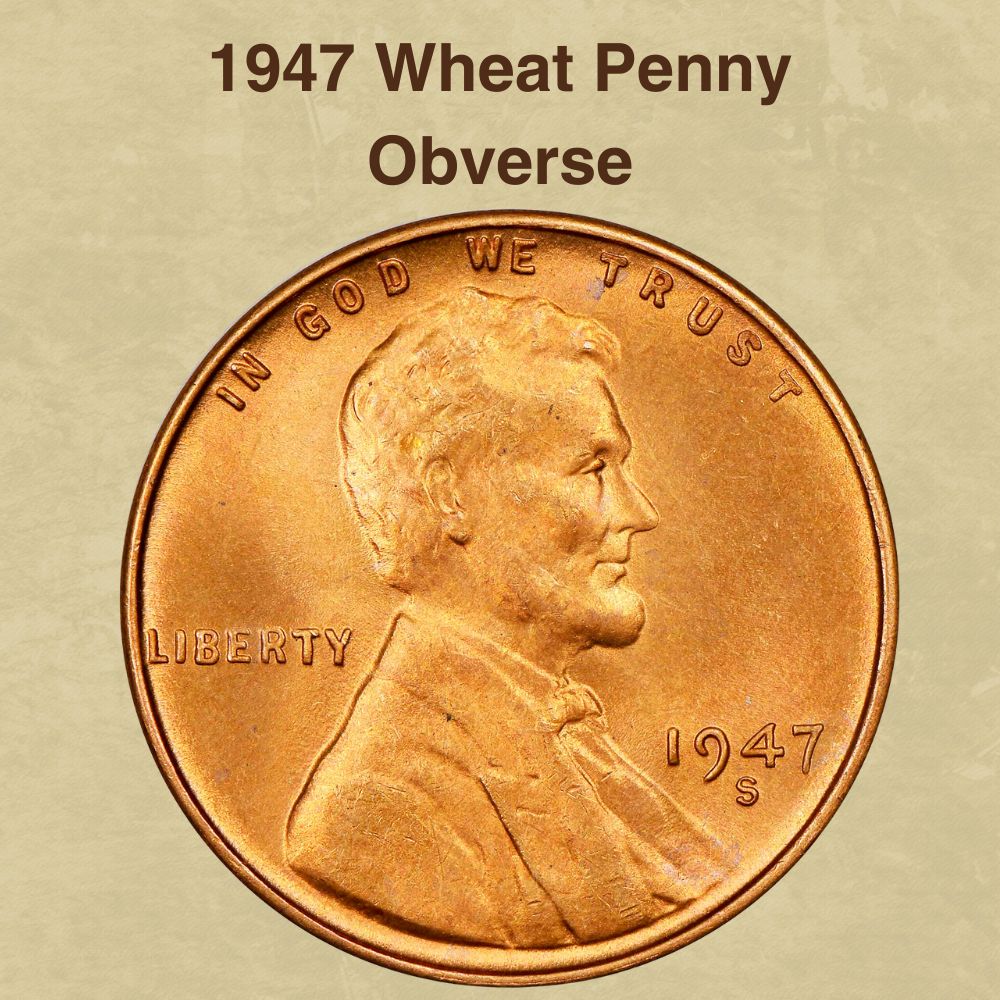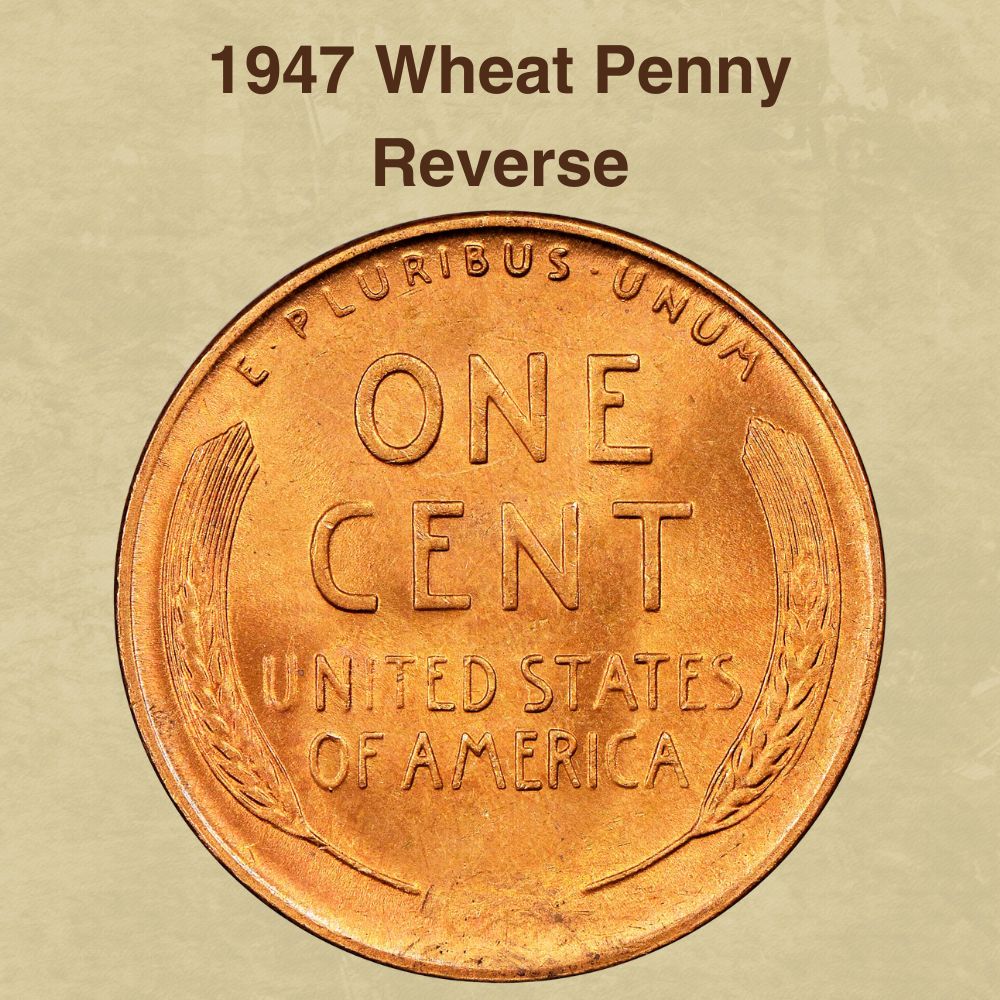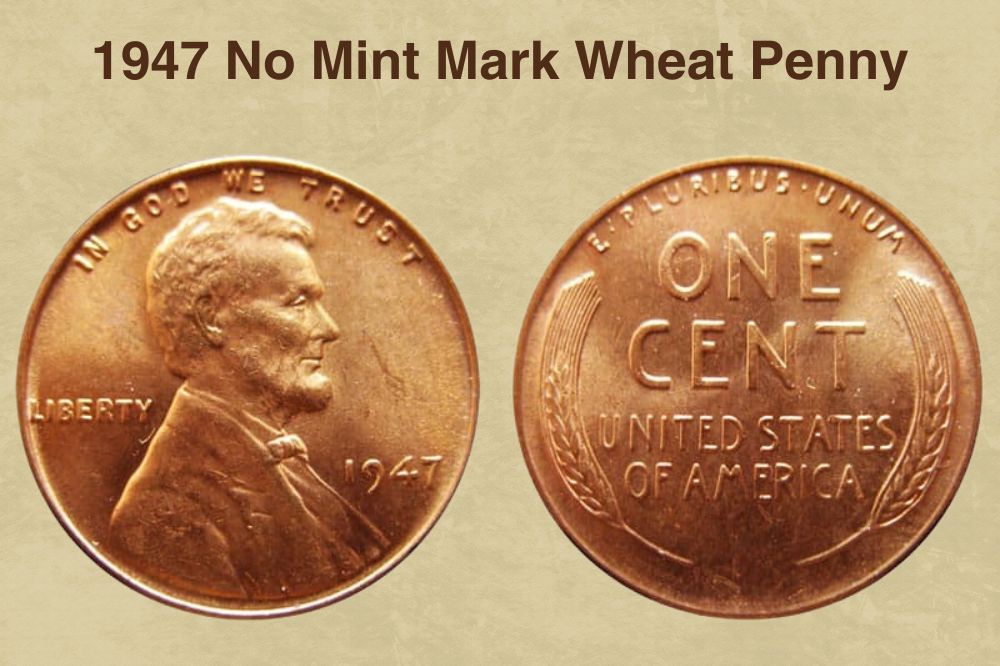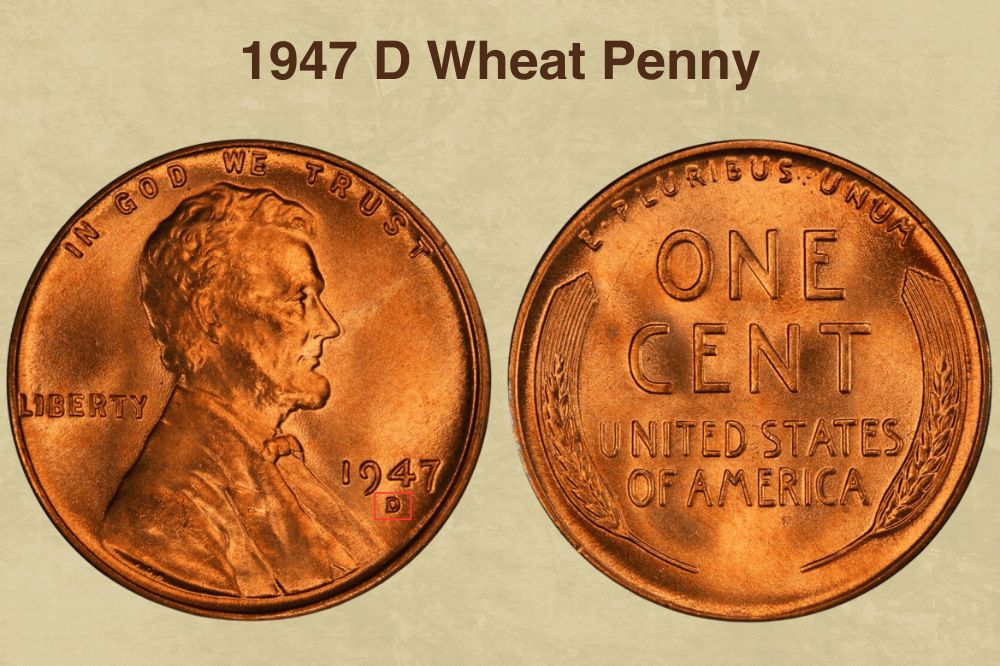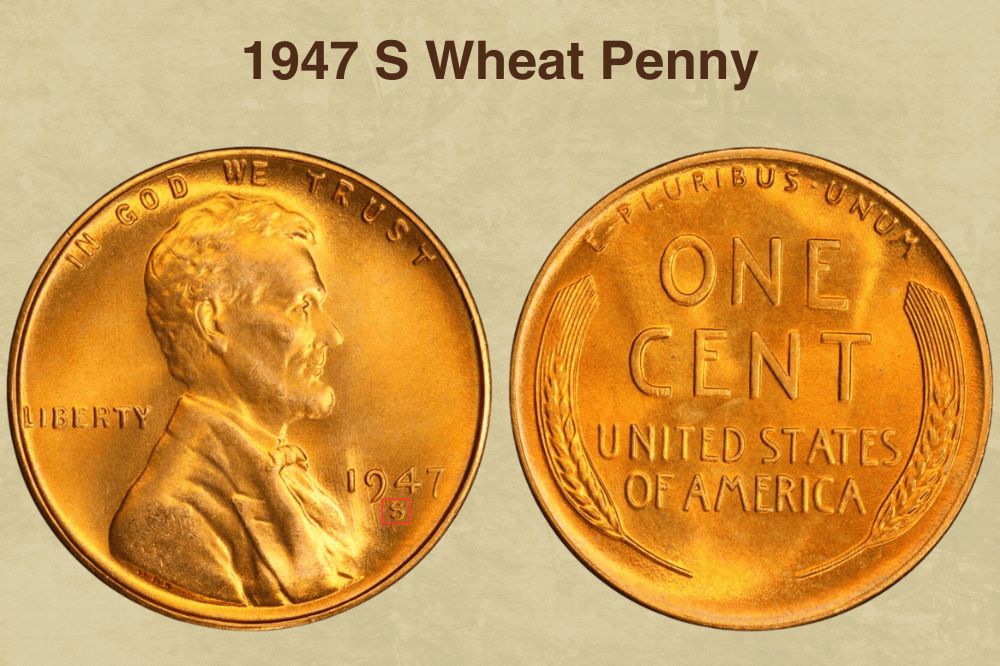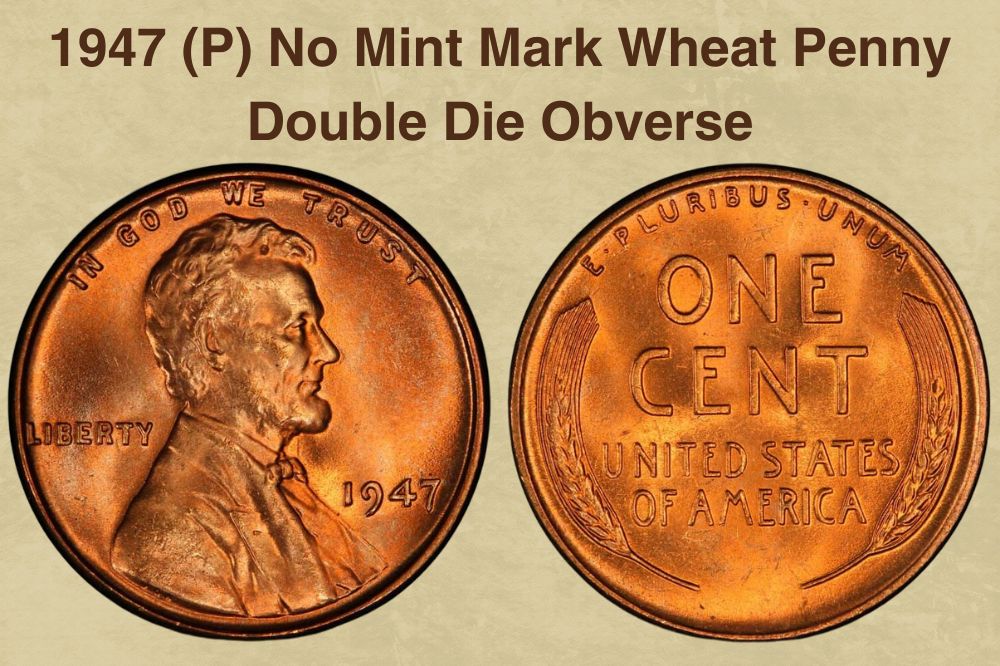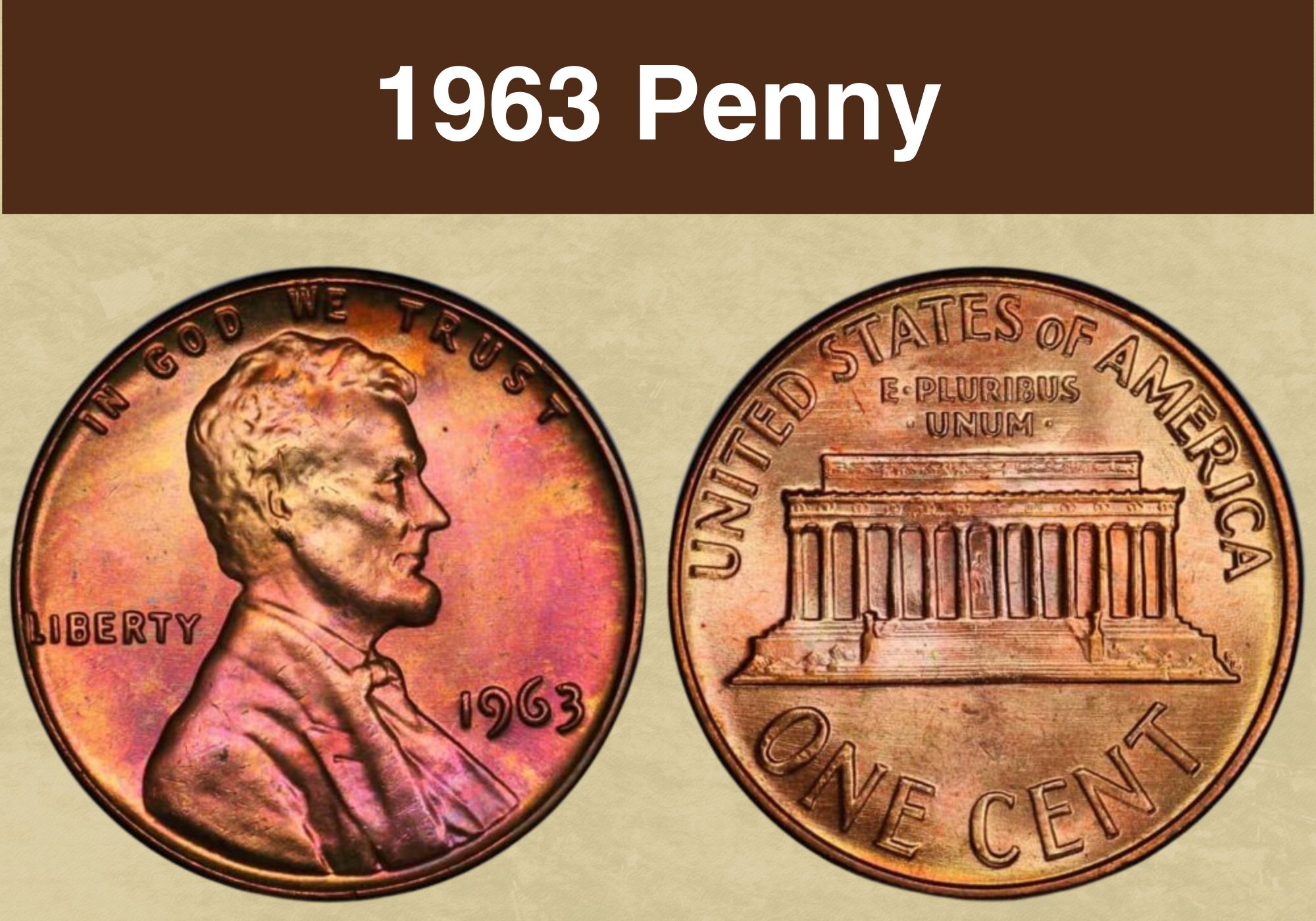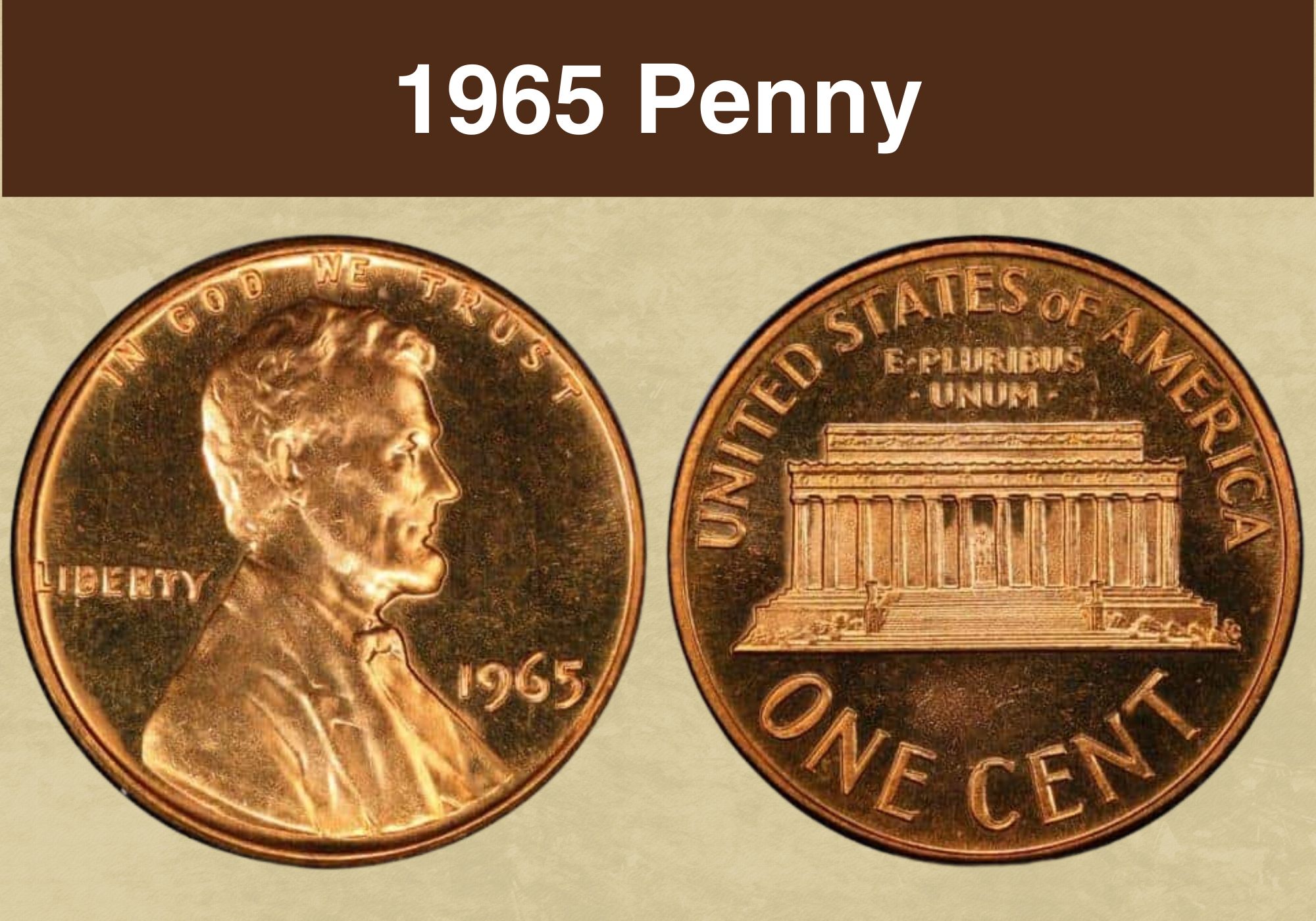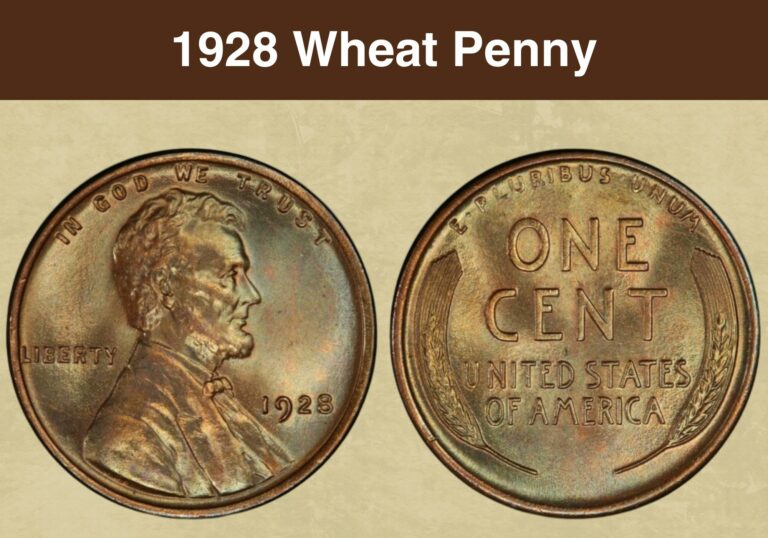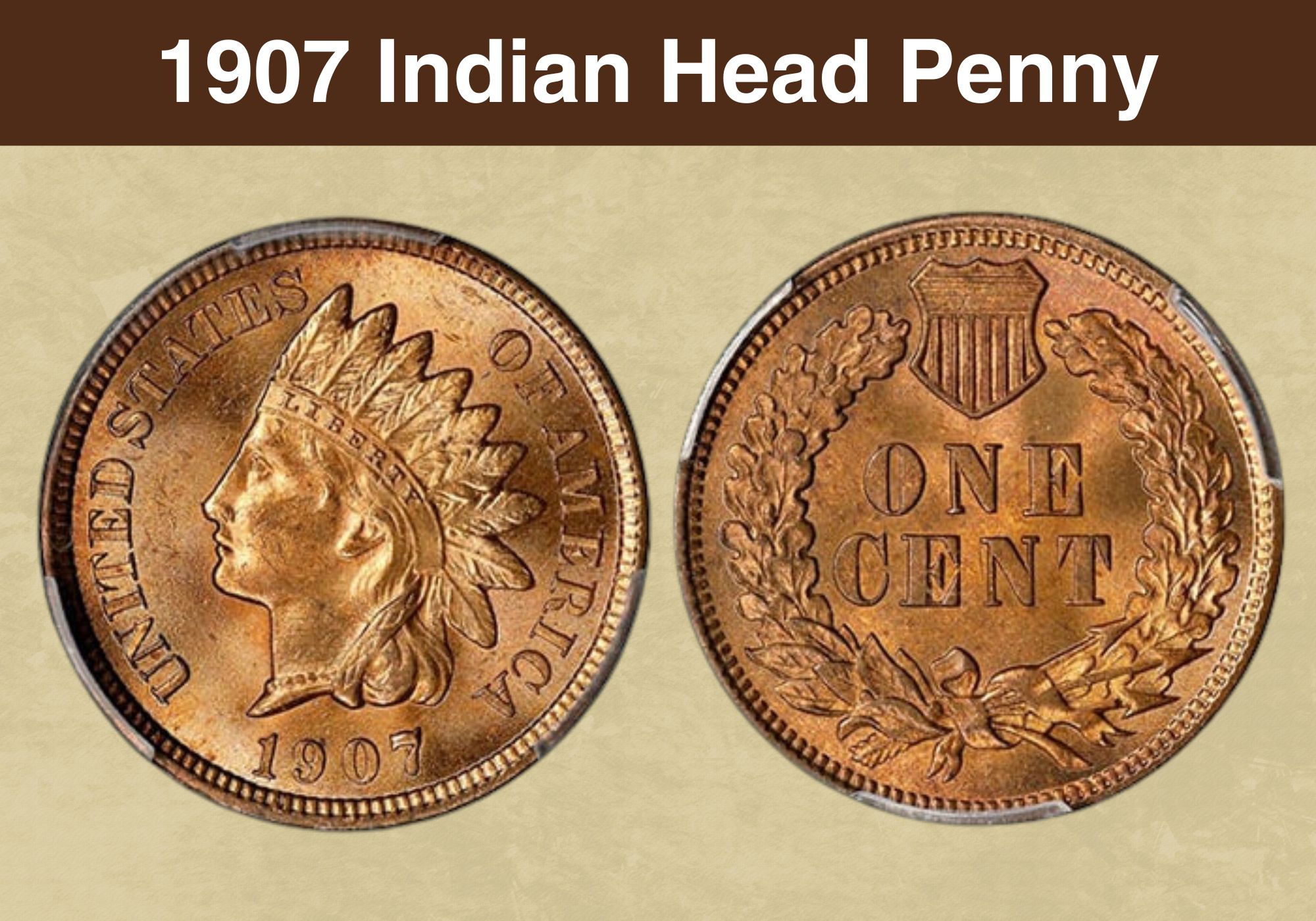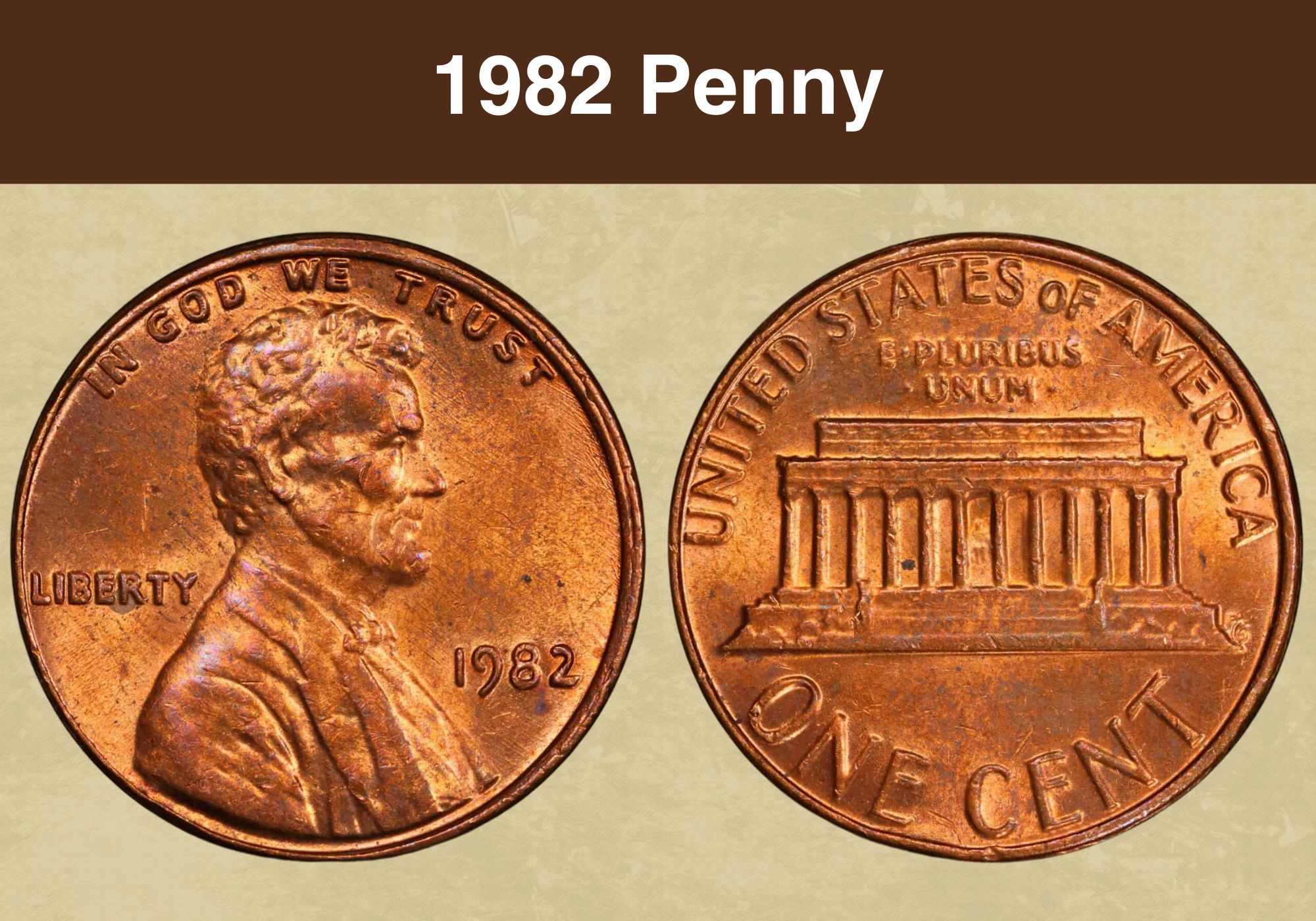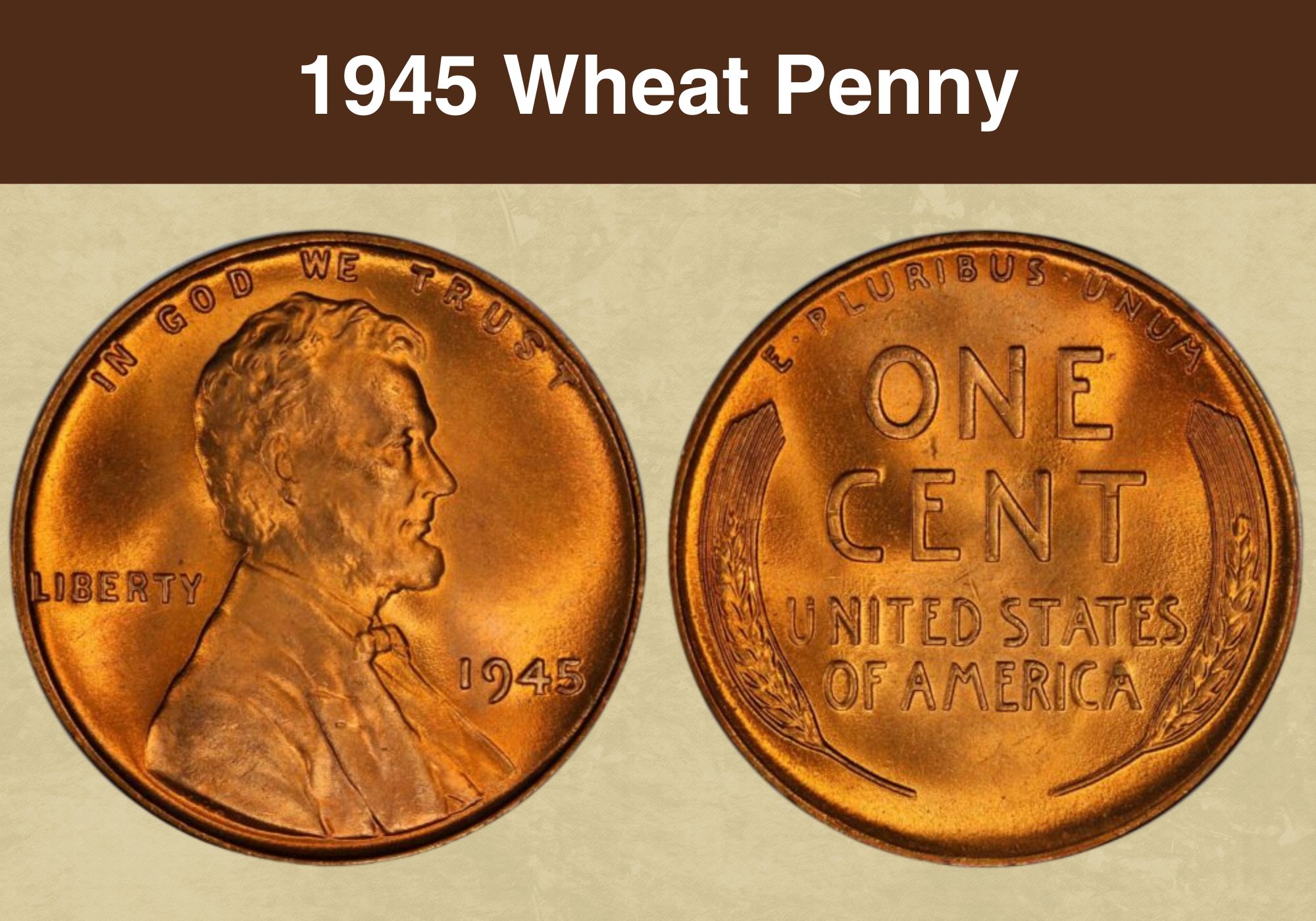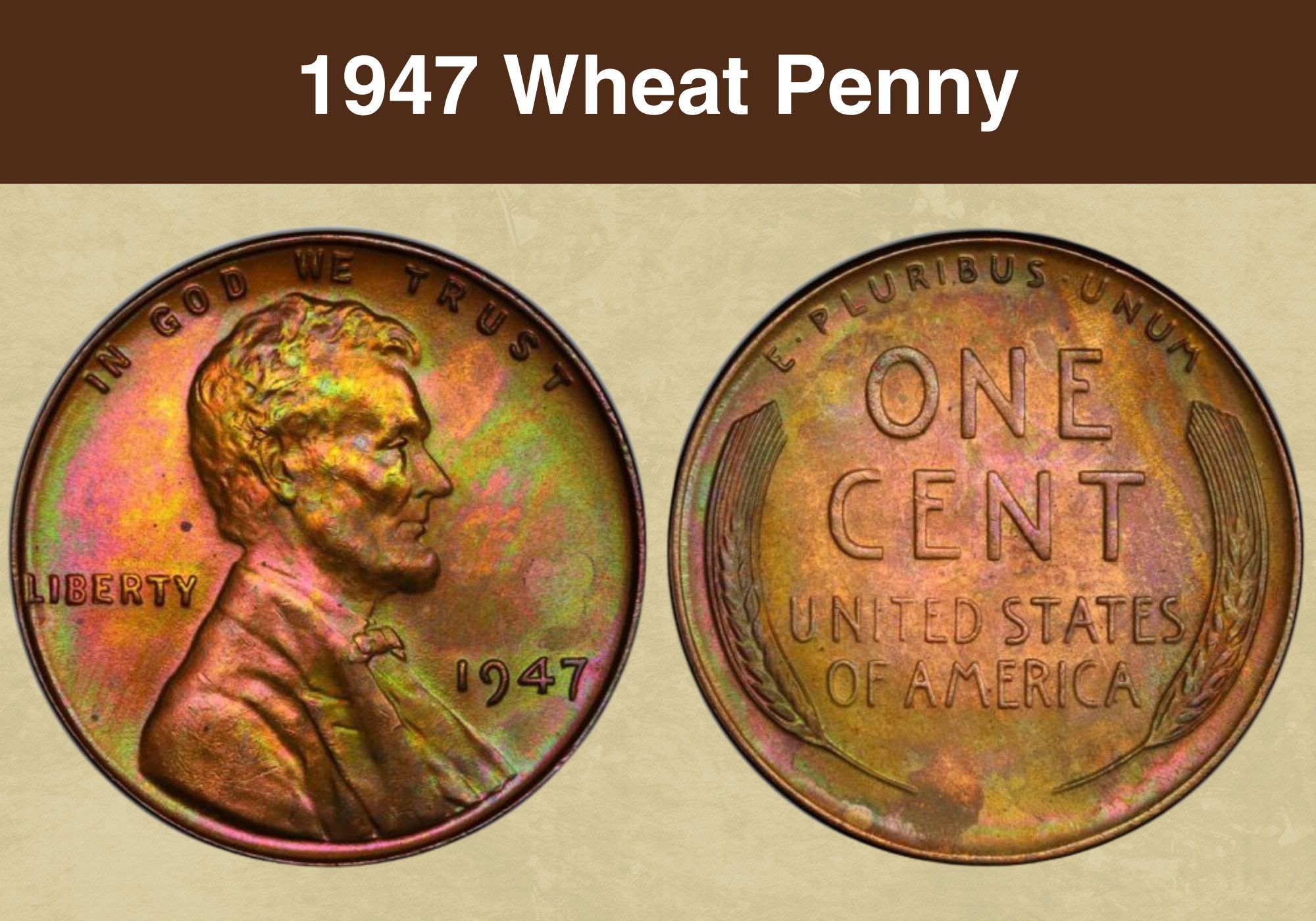
Coin Value Contents Table
You may hear the 1947 penny called a “Wheat penny” or a “Lincoln penny”. But how does it get its name? And is it valuable?
We’re going to answer both those questions. We’ll look in detail at the 1947 Wheat penny value, including the difference that mint mark and condition makes to price. And we’ll explore the history and design of this interesting coin.
Ready to learn more? Then let’s get started!
1947 Wheat Penny Value Chart* |
||||
| Type | MS60 | MS63 | MS65 | MS67 |
| 1947 No Mint Mark Wheat Penny Value | $5 | $10 | $30 | $2,150 |
| 1947 D Wheat Penny Value | $5 | $11 | $20 | $300 |
| 1947 S Wheat Penny Value | $2 | $8 | $24 | $325 |
*Values given are for coins graded red.
History of the 1947 Wheat Penny
The 1947 penny is part of a series that dates back to the early years of the twentieth century. 1909 marked the centenary of the birth of President Abraham Lincoln. And the nation was keen to celebrate the occasion.
Until then, the idea of placing the image of a real person on a coin had been considered unseemly. It was, after all, what monarchies did. But the desire to honor Lincoln’s memory with a coin bearing his image gained increasing popular support.
So it was that 1909 saw the issue of the first ever Lincoln penny, named because of the portrait of the former president which appeared on the obverse. The reverse carried a design of two ears of wheat. This gave rise to the coin’s alternative nickname, the Wheat penny.
The same pair of designs continued to be used for fifty years. The 1947 penny, then, is both a Lincoln penny and a Wheat penny.
But in 1959, to mark 150 years since Lincoln’s birth, the design on the reverse was changed. It was changed again in 2009 for the bicentenary, and again a year later.
Throughout all those changes, the portrait of Lincoln on the obverse remained a constant. And it is still appearing on new cents today, making it the longest running design in US coin history.
The first Lincoln pennies were enormously popular. People queued outside banks to get their hands on them. They were seen as instant collectors’ items, changing hands for up to 25 times their face value.
But not everyone was so positive. The vending machine industry complained that the new coins were too thick to fit in machine slots. The Mint, however, refused to change them, so it was ultimately the machines that had to be re-engineered.
Proof pennies were struck in 1936 for the first time. These were produced at the Philadelphia Mint using specially prepared planchets and dies. They were aimed at collectors, and were made in several other years too – although not in 1947.
That year saw pennies struck in Philadelphia, Denver and San Francisco. Pennies made in Denver and San Francisco were marked with a “D” and an “S” respectively. Those from Philadelphia had no mint mark.
They were made from bronze, a mixture of copper, tin and zinc. It was the same composition used since 1909, with the exception of a single year – 1943. With copper and tin in high demand for the war effort, that year saw pennies produced in steel instead.
Also read: 12 Most Valuable Lincoln Penny Worth Money
Features of the 1947 Wheat Penny
The Obverse of the 1947 Wheat Penny
The portrait of Abraham Lincoln that appears on the obverse of the 1947 penny is the work of an artist named Victor David Brenner.
Brenner had previously sculpted a portrait of President Theodore Roosevelt for a medal for the Panama Canal Commission. It was probably this that brought him to Roosevelt’s attention, and bagged him the job of designing the new Lincoln penny.
His portrait shows Lincoln in profile, facing to the right as the coin is viewed. Brenner said that he had given the former president a lively expression, imagining him as he would have looked when reading to a child.
The version on the 1947 Wheat penny differs slightly from the original. Lincoln’s cheek and coat are both smoother. In 1916, Charles Barber, then the Chief Engraver at the Mint, modified the image to prolong the life of the dies.
The motto “IN GOD WE TRUST” is inscribed above the portrait, curving parallel to the upper coin edge. To Lincoln’s left is the word “LIBERTY”, while the date appears lower on the right-hand side.
Pennies struck in Denver or San Francisco will have a mint mark below the date. Denver coins are marked with a “D” and San Francisco ones with an “S”. If there’s no letter at all, the coin was struck in Philadelphia.
The Reverse of the 1947 Wheat Penny
The reverse of the 1947 Wheat penny shows two ears of durum wheat. The stylized representations curve up either side of the coin, flanking the denomination. The latter is inscribed in large letters in the center of the coin.
Below the denomination are the words “UNITED STATES OF AMERICA”. And at the top, arching parallel to the upper edge, are the words “E PLURIBUS UNUM”. The phrase is Latin for “From the many, one”, a reference to the genesis of the country as a union of states.
The very first Lincoln pennies had Brenner’s initials on the reverse. But they were considered too bold, as if the artist were advertising his wares. Production was halted early in 1909, and the initials were removed, before being reinstated on the obverse nine years later.
Other Features of the 1947 Wheat Penny
The 1947 Wheat penny measures 19 millimeters in diameter and weighs 3.11 grams. It’s made of 95 per cent copper, with the remaining weight comprised of tin and zinc.
The high copper content means that the color of individual coins can vary significantly. When new, copper is a rich red tone, but that dulls to brown with handling and exposure to the air.
Copper coins fall into one of three color categories: red, red and brown, and brown. Red coins must be red over at least 95 per cent of their surface area. Red and brown examples are red over between 5 and 95 per cent of their surface. And coins with less red than that count as brown.
Generally speaking, red coins are considered most desirable by collectors, and brown coins the least.
You can learn more about how to grade the color of your Wheat penny in this YouTube video from CoinOpp.
Also read: 13 Most Valuable Wheat Penny Worth Money
1947 Penny Grading
| # | Grade |
|---|---|
| 1 | Basal State-1 |
| 2 | Fair |
| 3 | Very Fair |
| 4, 5, 6 | Good |
| 7, 8, 10 | Very Good |
| 12, 15 | Fine |
| 20, 30 | Very Fine |
| 40 | Extremely Fine |
| 50 | About Uncirculated |
| 60 | Mint State |
| 65 | Mint State |
| 70 | Mint State |
Please check our grading guides to know your coin scale, It’s the necessary step to know the exact value of your coin.
Check out now: How to Grade Lincoln Wheat Penny?
1947 Wheat Penny Value Guides
1947 No Mint Mark Wheat Penny Value
The key to establishing the value of any coin is its condition. Coin condition is graded on a scale from 1 to 70. 1 signifies a coin that’s in the poorest possible condition while the mintage and denomination can still be identified. 70 is awarded to a flawless coin.
Coins in uncirculated condition are known as “mint state”. They are graded between 60 and 70 on the scale. And coins that are graded 65 or above are known as “gems”.
The Philadelphia Mint facility struck well over 190 million Wheat pennies in 1947. Today, the independent coin grading agency, the PCGS, estimates that around 19 million survive.
The vast majority of those are brown coins in circulated condition. And unless they have an interesting Mint error, they won’t be worth more than their face value.
The same goes for the majority of red and brown coins. At high mint state grades, however, they can fetch around $10 to $20.
The finest survivors are red pennies, of which the PCGS estimates around 7,000 remain. At MS60, one of those is worth around $5, and that value doubles at MS63.
Around half the surviving red pennies are believed to be gems. Values for those start at $30, rising to $165 at MS66, and $2,150 at MS67.
But the finest examples to have come to light to date are graded MS67+. The PCGS has certified just two coins at that level, and values them at $17,500 apiece.
1947 D Wheat Penny Value
The Denver Mint facility struck almost 195 million Wheat pennies in 1947. And at most grades, values for the D mint mark are the same as for their Philadelphia counterparts.
That means all but the very finest mint state brown, and red and brown, examples will only be worth their face value.
Red pennies in mint state start at around $5 (MS60), rising to $20 for a gem MS65. The jump in value comes at MS67, where prices break into three digits at $300.
And the crème de la crème are coins graded MS67+. The PCGS has certified fifteen of those to date, with a value of $3,000 each.
1947 S Wheat Penny Value
The San Francisco Mint facility produced slightly fewer 1947 pennies than the other two locations. Nevertheless, 99 million came out of the coin presses there.
Roughly one in ten of those are believed to survive to this day. But the proportion of survivors graded red is much higher, with an estimated 13,000 coins in this color grade.
For brown and red and brown coins, values are the same as for Philadelphia and Denver pennies of the same year. Most are worth only their face value, with higher prices achieved only for the very best examples.
There are occasional surprises, however. One brown 1947 S penny graded MS65 sold at auction in 2011 for $150. That’s significantly higher than the PCGS valuation for a red penny at the same grade – just $24.
Today, red pennies in mint state are valued at between $2 (MS60) to $325 (MS67). And the highest grade yet awarded is MS67+. The 22 coins certified at this level to date are each valued at $1,100.
Also read: 17 Most Valuable Indian Head Penny Worth Money
Rare 1947 Wheat Penny Errors List
1947 (P) No Mint Mark Wheat Penny, Double Die Obverse
Some of the pennies struck in Philadelphia in 1947 have what’s known as a double die obverse. Look for double lines on the date, especially the bottom of the “1” and the top of the “7”. You’ll probably need a microscope or loupe to spot them.
These extra lines were caused by an error during the manufacture of the die used to impress the obverse design on the planchet. In order to capture every detail of the design, the die had to be struck several times with a hub.
If there was any movement during that process, the die would be left with double lines on part of the design. These would then be transferred to the coins it struck.
The value of a coin with this error depends on its condition.
A brown example graded AU53 (“about uncirculated”) sold at auction in 2013 for $94.
Red and brown coins graded MS62 sold for $45 in 2012, and for $79 a year later. At the time of writing, one red and brown coin with this error, graded MS65 by the PCGS, was being offered on an online auction site with a starting price of $345.
And a red coin graded MS65 sold at auction in 2014 for an impressive $550.
This YouTube video from Treasure Town looks at this error in detail.
1947 S/S Wheat Penny, Re-punched Mint Mark
Some of the pennies that came out of the San Francisco Mint facility in 1947 had a re-punched mint mark. Examine one of these carefully with a microscope or loupe, and you’ll see the shadow of an earlier “S” below the final one.
As ever, the value of a coin with this error depends on its condition.
A brown example graded AU55 by the PCGS sold at auction for $83 in 2015. That price seems high by today’s standards, however.
The PCGS currently values a red example graded MS60 at $40, rising to $150 at MS65. Top of the class are three red coins graded MS67, each valued at $800.
Also read: 11 Most Valuable Wheat Penny Errors
Where to Sell Your 1947 Wheat penny ?
Now that you know the value of your coins, do you know where to sell those coins online easily? Don’t worry, I’ve compiled a list of these sites, including their introduction, pros, and cons.
Check out now: Best Places To Sell Coins Online (Pros & Cons)
FAQs
What is a 1947 Wheat penny?
Wheat pennies are the US cents struck between 1909 and 1958. They get their name from the design on the reverse, two ears of durum wheat.
The 1947 penny is simply the version of that coin that was struck by the US Mint in 1947.
What Wheat penny is worth $100,000?
In almost every year, the Wheat penny was made of bronze – an alloy of copper, tin and zinc. But in 1943, it was decided to make it from steel instead. This would conserve stocks of copper and tin, both of which were vital to the war effort.
However, a handful of bronze planchets remained in the coin presses at the end of 1942. They should have been removed, but weren’t. And when the 1943 mintage went into production, they were struck with the dies for that year.
Only about 20 of these coins are believed to exist. So in any condition, they’re worth big money.
A bronze 1943 penny graded XF45 brown is valued by the PCGS at $215,000. The top grade for a brown example is MS62, and the two coins at that level are each worth $435,000.
Only one red and brown example has come to light. That one is graded MS61 and valued at $425,000.
And the sole red coin to have been discovered to date is graded MS63 and worth a cool $1 million.

